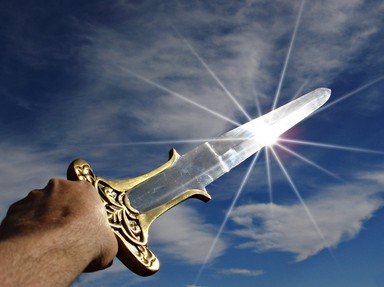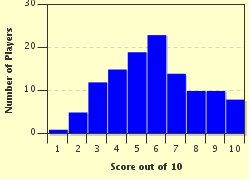Quiz Answer Key and Fun Facts
1. The first invasion of Greece by Persia took place from 492-490 BC. What is the name of the decisive battle that gave the Greeks victory?
2. Who was the Frankish statesman and military leader who at the Battle of Tours (732 AD) defeated a large army of Moors thus halting the Muslim advance into Western Europe?
3. The Battle of Hastings took place on October 14, 1066. Who led his troops to victory?
4. In 1298 William Wallace was defeated in battle by an English army lead by Edward I and after the defeat resigned as Guardian of Scotland. What was the name of this battle?
5. The pre-Columbian era incorporates the history of the Americas before the appearance of significant European influence on the continent. What battle marked the opening stage of the European conquest of the Americas by the capture of the King Atahuallpa of the Incas in Peru?
6. The Siege or Battle of Yorktown in 1781 proved to be the last major battle in the American Revolutionary War. What was the name of the treaty that was signed in 1783 that brought an end to the American Revolutionary War?
7. In what battle was Napoleon I defeated and within 6 months exiled to the island of Elba?
8. On September 17, 1862 the armies of the North and South met in what was to be the bloodiest single day of casualties for both sides in the American Civil War. What was the name of this battle?
9. There were many battles fought during WWI. However, what was the battle fought in north-eastern France between Germany and France that lasted one day short of 10 months in 1916?
10. Vasily Grigoryevich Zaytsev became a Hero of the Soviet Union during WWII and his exploits were made into a full length feature film in 2001. What was his speciality?
Source: Author
zambesi
This quiz was reviewed by FunTrivia editor
bloomsby before going online.
Any errors found in FunTrivia content are routinely corrected through our feedback system.


